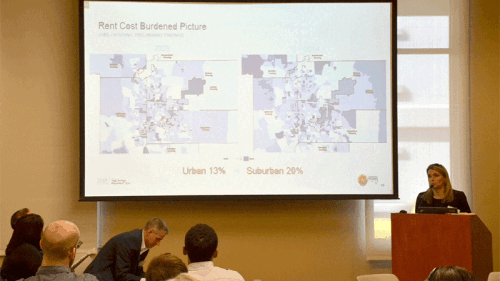Multifamily
Alternative, or nonbank, lenders are filling in gaps in the mortgage world where they find them, whether it be the result of increasing capital requirements for banks, consolidation in the banking sector, or a pullback by commercial mortgage–backed securities lenders. Last year alone, the five largest players in the sector collectively funded some $20 billion of interim loans. Plus, interest rate survey data from Trepp.
U.S. multifamily rents increased in May for the third month in a row, according to Yardi Matrix’s monthly survey of 121 markets, but the rate of growth continues to decelerate. On a year-over-year basis, U.S. monthly rents were up 1.5 percent nationwide in May. The year-over-year growth rate has decreased for 13 straight months since peaking at 5.4 percent in April 2016.
The “Markets to Watch” section of the 2017 edition of Emerging Trends in Real Estate® offers an expanded look at all 78 markets included in this year’s survey, including the industry outlook for the primary markets in the U.S. Pacific Northwest. Here is the industry outlook for the primary markets in the U.S. Pacific Northwest.
With Denver’s population expanding from about 470,000 in 1990 to 700,000 today, many longtime residents in some gentrifying neighborhoods find it difficult to remain as rents, home prices, and property taxes climb. How do communities in other U.S. cities provide for both lower-income families and local culture while being revitalized?
A new report published by ULI Boston/New England sheds light on the shrinking middle-class in the Greater Boston region due in part to the lack of affordable housing options for middle-income households.
Landlords are confident that apartments are not overbuilt, and rents continue to increase in many markets, but real estate investment trust investors are less certain. This year, deliveries are reaching new peaks, and investor worries about a market softening are reflected in the sector’s –1.12 percent year-to-date total return. Plus, interest rate survey data from Trepp.
What millennials will do once they marry and have children, a restrictive lending environment, and flat income growth were among the topics discussed at the third annual Butcher Forum, an invitation-only gathering in April of the top executives who represent the multifamily housing industry in the United States.
“Suburbs isn’t a dirty word,” declared Adam F. Ducker, RCLCO managing director and moderator of the “Next Stop Suburbs” session at the ULI Spring Meeting in Philadelphia.
How can cities increase density while enhancing livability? Members of ULI’s product councils discuss the challenges that developers and municipalities face when densifying urban and suburban areas, working with public concerns, and keeping cities attractive.
The sharing economy is a hot topic; Zipcar, Uber, Airbnb, bike sharing, and shared workspaces are just a few of the brands and concepts in this space. With Oslo, Ditto Residential, a boutique residential developer in Washington, D.C., has reconceived and updated another time-tested sharing idea, house sharing—or in this case, apartment sharing, sometimes known as group living.







